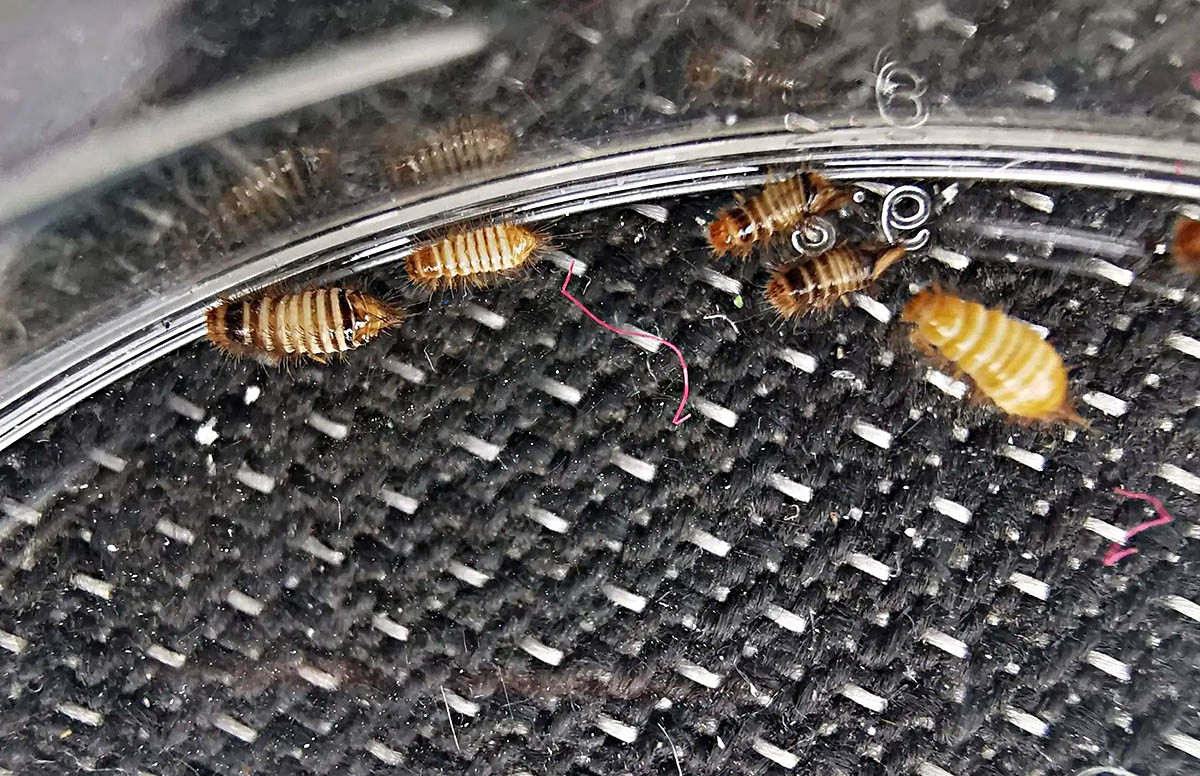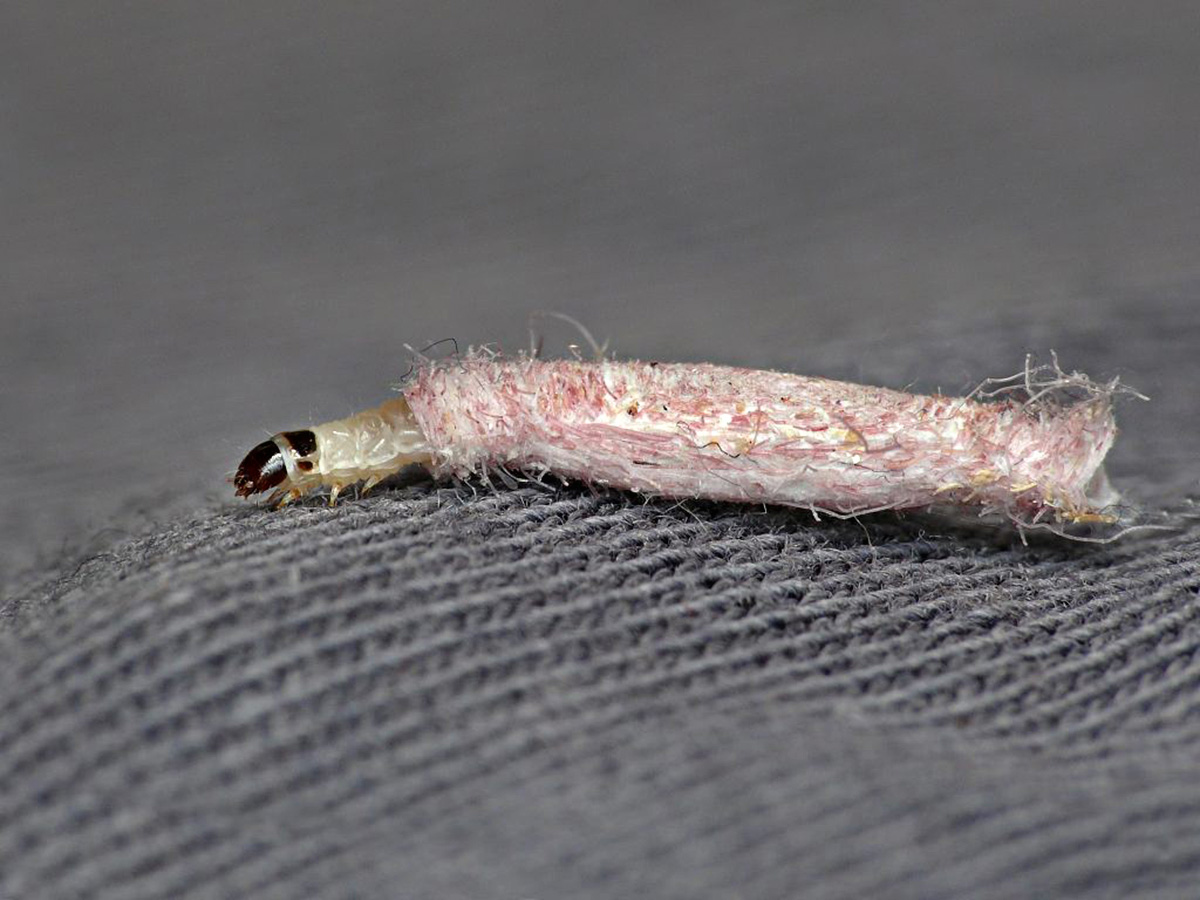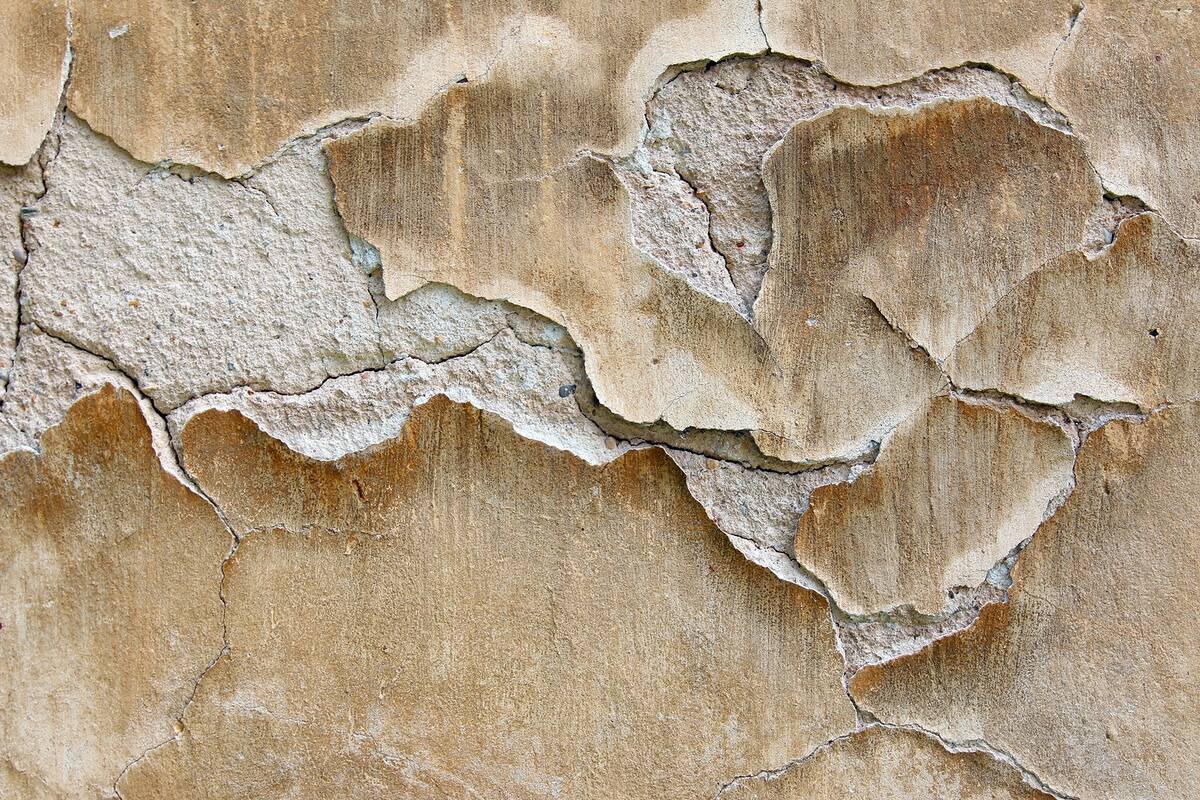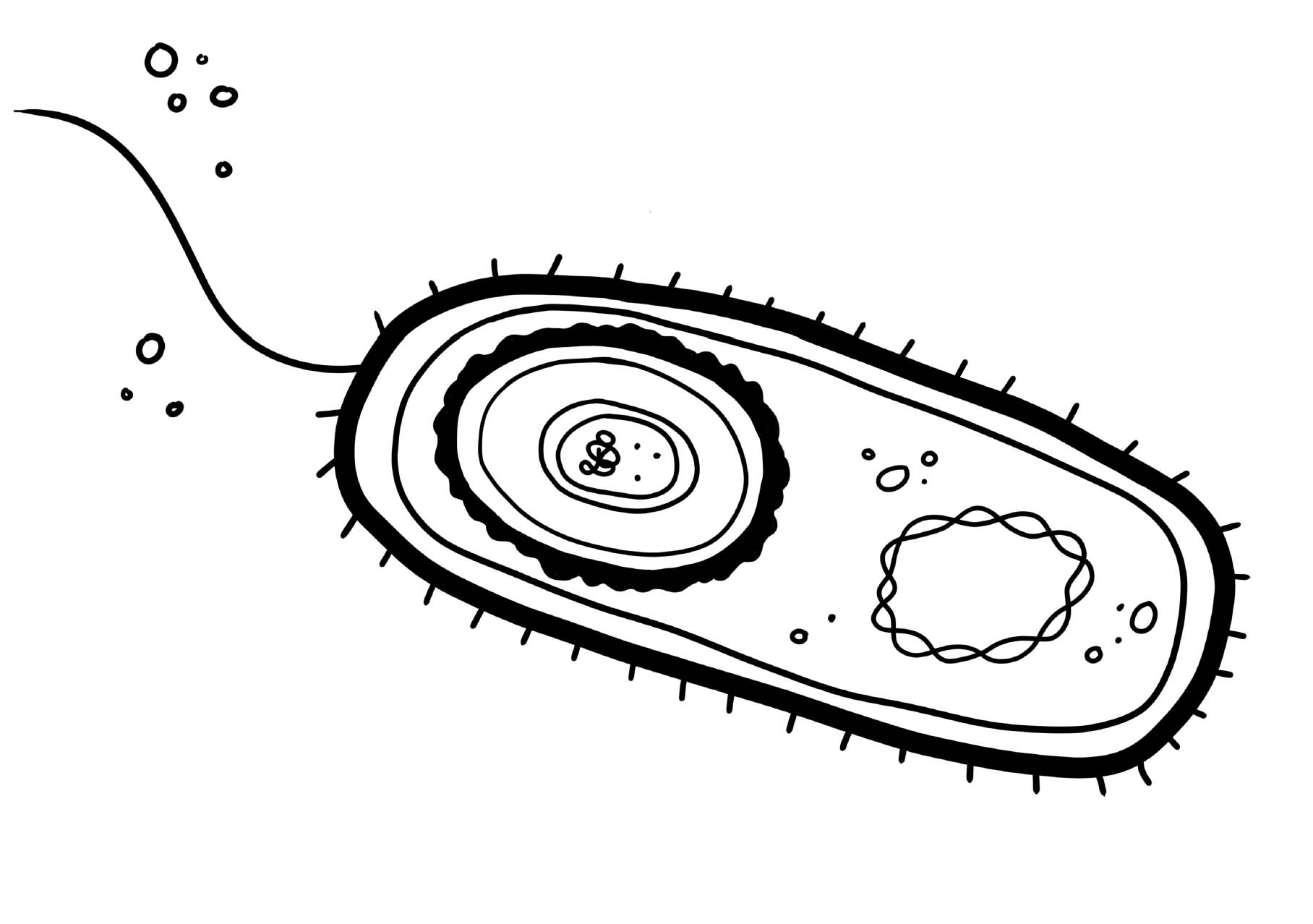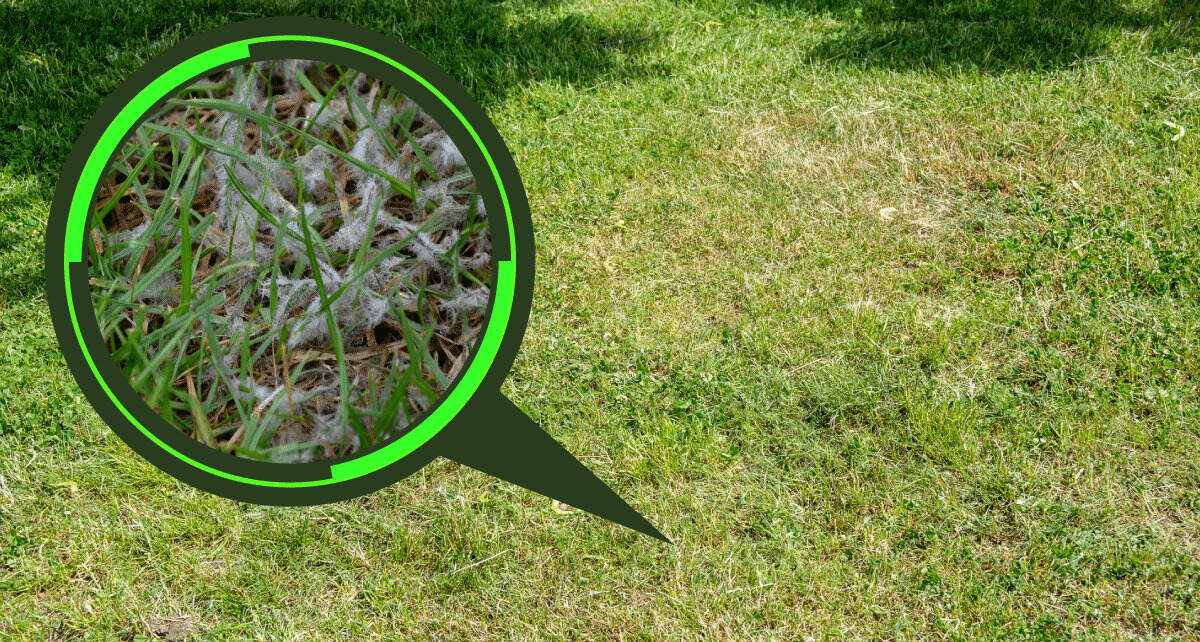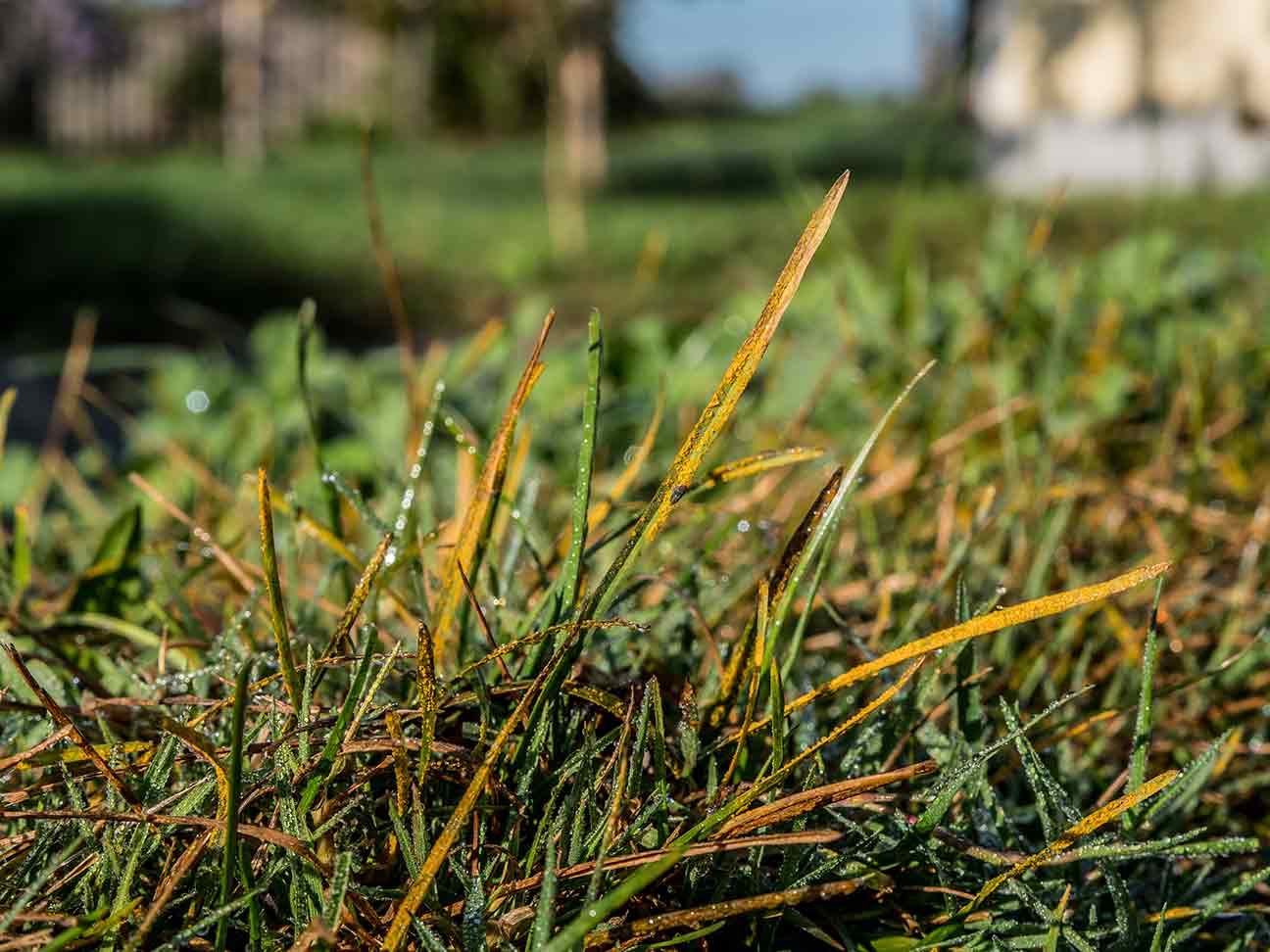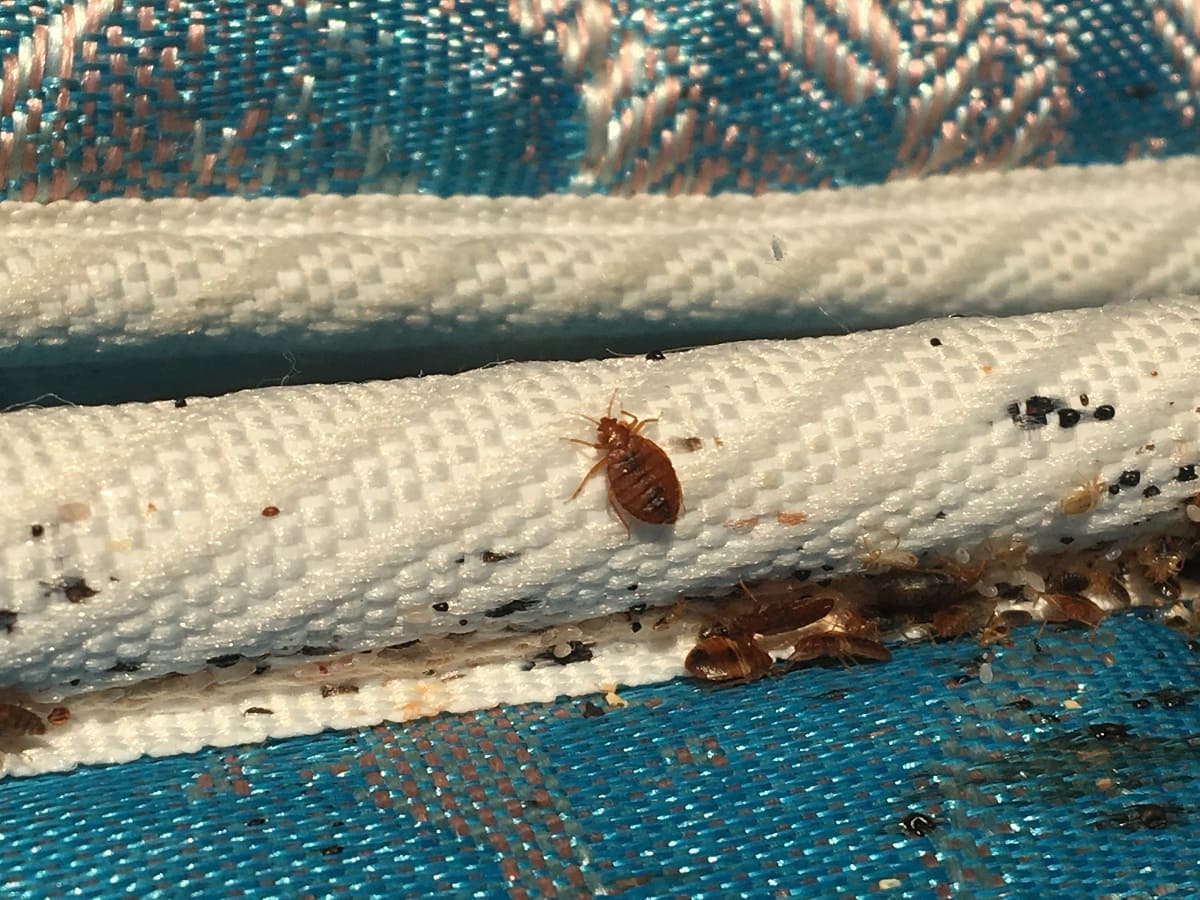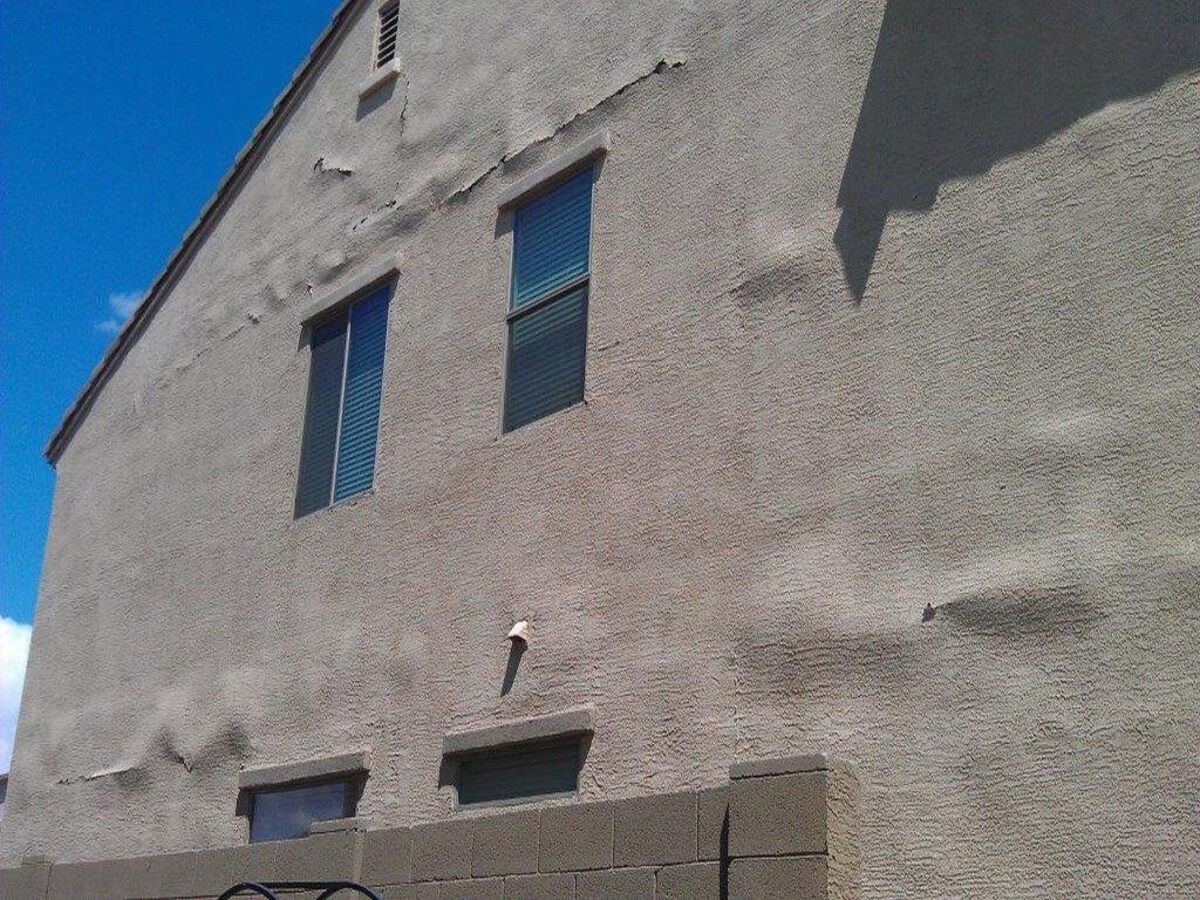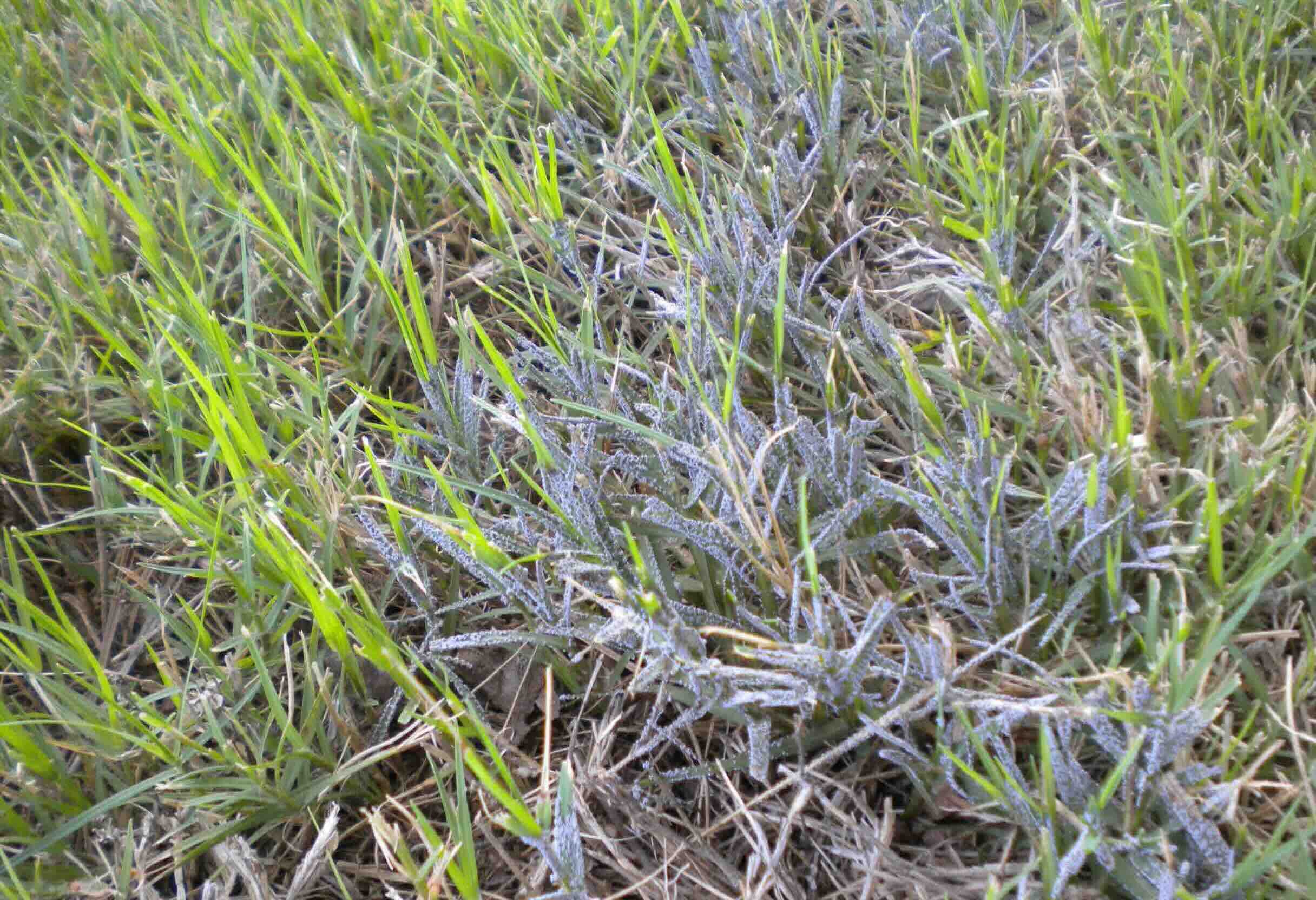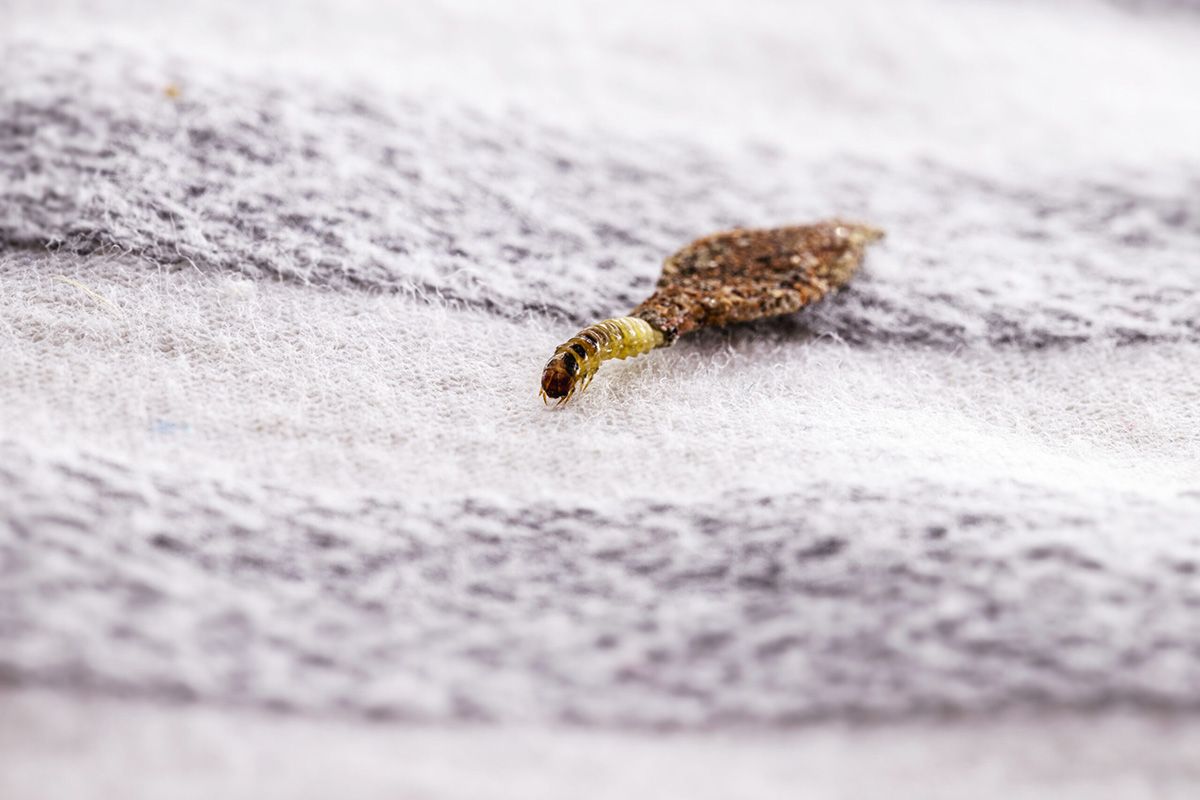

Articles
What Causes Carpet Moths
Modified: January 9, 2024
Discover the causes of carpet moths and how to prevent them with our informative articles. Protect your carpets and keep your home moth-free.
(Many of the links in this article redirect to a specific reviewed product. Your purchase of these products through affiliate links helps to generate commission for Storables.com, at no extra cost. Learn more)
Introduction
Carpet moths, also known as clothes moths, are common household pests that can wreak havoc on your carpets, rugs, and upholstery. These tiny insects belong to the Tineidae family and are known for their ability to cause extensive damage to natural fibers such as wool and silk. If left unchecked, carpet moths can quickly infest your home and destroy valuable belongings.
Understanding the lifecycle and behavior of carpet moths is essential in effectively preventing and controlling infestations. In this article, we will delve into the causes of carpet moth infestations and explore various prevention and control methods to keep these pesky insects at bay.
Key Takeaways:
- Regular vacuuming and cleaning are essential to prevent carpet moth infestations. Thoroughly inspect and treat infested items to eliminate pests and protect your belongings. Incorporate moth repellents and maintain optimal humidity levels for comprehensive prevention.
- Stay proactive in preventing carpet moth infestations by using natural or commercial moth repellents strategically. Regularly inspect and treat infested items, maintain optimal humidity levels, and address any moisture issues promptly. Prevention is key to keeping your home pest-free.
Read more: What Causes Moths In The Pantry
Understanding Carpet Moths
Carpet moths are small, winged insects that belong to the Tineidae family. They have a distinctive golden or light brown color and measure about 1/4 to 1/2 inch in length. Despite their name, carpet moths are not confined to carpets alone. They can infest a wide range of materials, including rugs, upholstery, clothing, and even stored fabrics.
Carpet moths are predominantly nocturnal creatures, preferring to remain hidden during the day and becoming active at night. They are attracted to dark, undisturbed areas such as corners, under furniture, and in closets. These pests are particularly drawn to natural fibers, as they provide the ideal environment for them to lay their eggs.
The primary diet of carpet moths consists of natural materials such as wool, silk, feathers, and fur. They are especially attracted to items that contain leftover food or perspiration, as these provide additional nutrients for their larvae. When carpet moths infest an area, they can leave behind irregularly shaped holes in carpets and fabrics as a result of their feeding.
It is important to note that carpet moths are different from the common household moth species that are attracted to light. Carpet moths have evolved to thrive in dark, undisturbed environments, making them more challenging to detect and eliminate.
Now that we have a basic understanding of carpet moths, let’s explore the lifecycle of these pests to gain a better insight into their behavior and how to effectively tackle infestations.
Lifecycle of Carpet Moths
To effectively control and eliminate carpet moth infestations, it is crucial to understand their lifecycle. Carpet moths undergo four distinct stages: egg, larvae, pupae, and adult. Each stage plays a vital role in their development and survival.
Egg Stage: Carpet moths begin their lifecycle as eggs, which are laid by adult females. These eggs are tiny, usually no larger than a pinhead, and are typically white or cream in color. The female moth carefully selects suitable materials, such as carpets or clothing, to lay her eggs. The eggs are usually hidden in dark, undisturbed areas, making them difficult to detect.
Larvae Stage: After an incubation period of approximately one to two weeks, the eggs hatch into larvae. Carpet moth larvae are the most destructive stage of their lifecycle. They are small, whitish larvae with brownish heads and measure around 1/4 inch in length. The larvae are voracious eaters and actively feed on natural fibers, causing damage to carpets, rugs, and other infested materials. The larvae can stay in this stage for several months, depending on the availability of food and environmental conditions.
Pupae Stage: Once the larvae have matured and reached a certain size, they enter the pupae stage. During this stage, the larvae spin a protective cocoon around themselves using silk and surrounding materials, blending in with their environment. The pupae are usually located in hidden areas, making them challenging to detect. The moth remains in the pupae stage for approximately two to three weeks, undergoing metamorphosis to transform into an adult moth.
Adult Stage: After completing the transformation, the adult carpet moth emerges from its cocoon. The adult moths have narrow wings with a distinctive golden or light brown coloration, making them easily recognizable. However, adult carpet moths do not feed on fabrics or materials. In fact, their sole purpose in the adult stage is to reproduce. The adult moths mate, and the female then begins to lay eggs to start the lifecycle anew.
Understanding the lifecycle of carpet moths is essential for developing effective prevention and control strategies. By targeting each stage of their lifecycle, it becomes possible to disrupt their breeding and reduce their population in your home. In the next section, we will explore how to identify the presence of carpet moths in your living space.
Identifying Carpet Moths
Identifying carpet moths is crucial in detecting and addressing infestations early on. While these tiny insects may be difficult to spot, several signs can indicate their presence in your home.
1. Visible Adult Moths: Adult carpet moths are usually the most visible sign of an infestation. They are attracted to light and may be spotted flying around in low-light areas such as closets or near windows. Adult carpet moths are small, measuring about 1/4 to 1/2 inch in length, and have a distinct golden or light brown coloration. If you notice an increase in moth activity, it’s important to investigate further for potential infestations.
2. Damage to Fabrics: Carpet moths are notorious for their feeding habits, which can result in noticeable damage to carpets, rugs, upholstery, and clothing. Look for irregularly shaped holes or patches of missing fibers on fabric surfaces. Pay close attention to areas that are frequently overlooked or undisturbed, such as under furniture or along baseboards.
3. Larval Casings: Carpet moth larvae create protective casings as they feed and molt. These casings are often described as small, tubular structures made of silk and surrounding fibers. You may find these casings hidden in corners, crevices, or within the fibers of infested materials. The presence of larval casings is a clear indication of an ongoing infestation.
4. Shed Skins: As carpet moth larvae grow and molt, they shed their skins. These discarded skins are often found in areas where the larvae have been active. You may notice small, translucent shells or skins that resemble tiny grains of rice. These shed skins can accumulate in infested areas over time.
5. Moth Larvae or Pupae: In severe infestations, you may discover actual carpet moth larvae or pupae. Larvae are usually small, whitish caterpillar-like creatures with brown heads. Pupae, on the other hand, appear as small cocoons made of silk and surrounding fibers. It’s important to note that pupae can be well-hidden, so meticulous searching may be necessary to find them.
If you notice any of these signs in your home, it’s crucial to take immediate action to prevent further damage and eliminate the infestation. In the following section, we will explore the common causes that contribute to carpet moth infestations.
Causes of Carpet Moths
Carpet moths can be persistent pests, and understanding the causes of their infestations can help you prevent future outbreaks. While there can be various factors contributing to carpet moth problems, here are some common causes to be aware of:
1. Poor Cleaning Habits: Insufficient or irregular cleaning can create an environment conducive to carpet moth infestations. Dirt, dust, and food particles that accumulate in carpets and rugs can attract carpet moths, providing a readily available food source for their larvae. Neglecting regular vacuuming and deep cleaning can exacerbate the problem and allow infestations to thrive.
2. Infested Furniture or Clothing: Carpet moths can easily transfer from infested furniture or clothing to carpets and rugs. If you bring second-hand items into your home without proper inspection or treatment, you run the risk of introducing carpet moths. Ensure that any used furniture, carpets, or clothing are thoroughly examined and possibly treated for potential infestations before bringing them inside.
3. Lack of Natural Predators: Natural predators, such as certain species of beetles, spiders, or birds, can help control carpet moth populations. If your home lacks these natural predators or if their populations are diminished, carpet moth infestations may become more prevalent. Maintaining a balanced ecosystem within and around your home can help keep carpet moth populations in check.
4. High Humidity and Moisture Levels: Carpet moths thrive in humid environments, as moisture helps to sustain their larvae. High humidity levels can be particularly problematic in areas such as basements, bathrooms, or poorly ventilated rooms. Excessive moisture can lead to the growth of mold, which attracts carpet moths and provides an additional food source for their larvae.
5. Neglected Carpets and Rugs: Carpets and rugs that are not properly cared for or frequently cleaned are more susceptible to carpet moth infestations. Neglected materials may contain accumulated dirt, dust, or food particles, creating an appealing environment for these pests. Regular maintenance and cleaning can help prevent infestations and keep your carpets moth-free.
By addressing these common causes, you can significantly reduce the risk of carpet moth infestations in your home. In the next section, we will explore prevention and control methods to help you keep these pests at bay.
Read more: What Causes Carpet To Wrinkle
Poor Cleaning Habits
Poor cleaning habits can contribute to the development and persistence of carpet moth infestations. Neglecting regular cleaning and maintenance of your carpets and rugs can create an environment that attracts and sustains these pests. Here are some key aspects to consider regarding the impact of poor cleaning habits on carpet moth infestations:
Lack of Vacuuming: Insufficient vacuuming allows dirt, dust, and food particles to accumulate in your carpets and rugs. These organic materials serve as a food source for carpet moth larvae, enticing them to infest and feed on your floor coverings. Regular vacuuming, at least once or twice a week, helps to remove debris and minimize the risk of infestations.
Skipping Deep Cleaning: Deep cleaning, such as steam cleaning or hot water extraction, is crucial for maintaining the cleanliness and hygiene of your carpets. Deep cleaning can help eliminate any hidden larvae, eggs, or pupae, thereby reducing the chances of a carpet moth infestation. Skipping or delaying deep cleaning can allow infestations to develop and spread.
Overlooking High-Risk Areas: Some areas of your home are more prone to dirt and food accumulation, making them attractive to carpet moths. For example, dining areas, kitchen entrances, and areas near pets’ food bowls are high-risk zones. Failing to pay extra attention to cleaning these areas can increase the likelihood of infestations.
Not Cleaning Spills Immediately: Spills and stains on carpets should be addressed promptly. Moisture from spills can create an environment favorable for mold growth, which not only attracts carpet moths but also provides an additional food source for their larvae. Promptly cleaning up spills and treating stains can help prevent infestations and maintain the integrity of your carpets.
Ignoring Regular Maintenance: Carpets and rugs require routine maintenance to keep them in good condition and free of potential infestations. This includes activities such as rotating furniture to prevent matting or wear patterns, using doormats to minimize the introduction of dirt and debris, and attending to loose fibers or frayed edges. Ignoring these maintenance tasks can make your carpets more susceptible to carpet moth infestations.
By establishing regular cleaning habits and adopting good maintenance practices, you can significantly reduce the risk of carpet moth infestations. Investing time and effort in keeping your carpets clean and well-maintained will not only protect them from damage but also create an environment that is unappealing to these pests.
Infested Furniture or Clothing
Infested furniture or clothing can be a significant cause of carpet moth infestations. These pests have the ability to transfer from one item to another, making it crucial to inspect and treat any used or second-hand items before introducing them into your home. Here are some key points to consider regarding the impact of infested furniture or clothing on carpet moth infestations:
Used Furniture: When purchasing used furniture, it’s essential to thoroughly inspect it for any signs of carpet moth infestation. Pay close attention to seams, corners, and crevices where these pests can hide. Look for signs of damage, such as holes or presence of larvae, pupae, or shed skins. If you notice any suspicious signs, it’s best to treat the furniture before bringing it into your home.
Second-Hand Carpets or Rugs: Similarly, second-hand carpets or rugs should be carefully examined before being placed in your living space. Inspect both sides of the carpet or rug for any visible signs of infestation, such as larvae, pupae, or visible damage. If possible, consider treating the carpet or rug with appropriate moth repellents or having it professionally cleaned before bringing it into your home.
Clothing and Fabrics: Infested clothing and fabrics can act as a source of carpet moth infestation. If you notice signs of carpet moth damage or infestation on your clothing, it’s important to isolate and treat the affected items. Laundering the clothing on the highest possible temperature or dry cleaning can help kill any larvae, pupae, or eggs that may be present.
Proper Storage of Seasonal Items: Seasonal clothing, blankets, and other fabric items that are not in use should be properly stored to prevent infestations. Clean and launder these items before storing them in airtight containers or vacuum-sealed bags. This reduces the chances of any existing carpet moth larvae or eggs surviving and causing an infestation in the future.
Regular Monitoring: To prevent the spread of carpet moths from infested furniture or clothing, it’s vital to regularly monitor these items for any signs of infestation. Perform routine inspections of your furniture, carpets, rugs, and stored fabrics. Look for early warning signs such as holes, shed skins, larval casings, or adult moths. Catching an infestation early allows for prompt treatment and minimizes the risk of further damage.
By taking proactive measures to inspect and treat infested furniture and clothing, you can reduce the risk of carpet moth infestations in your home. Remember to thoroughly inspect any used items before bringing them inside, and remain vigilant in monitoring your belongings for signs of these pests to maintain a moth-free environment.
Lack of Natural Predators
The presence of natural predators plays a crucial role in controlling carpet moth populations. Predatory species such as certain beetles, spiders, or birds feed on carpet moths and their larvae, providing a natural form of pest control. However, the lack of these natural predators can contribute to an increase in carpet moth infestations. Here are some key points to consider regarding the impact of the lack of natural predators on carpet moth infestations:
Imbalance in Ecosystem: In a balanced ecosystem, natural predators help keep pest populations in check. However, when there is a lack of natural predators in the environment, carpet moths can multiply without restraint. This can lead to more frequent and severe infestations in your home, as there are fewer natural checks and balances to control their population.
Pesticide Overuse: Excessive or indiscriminate use of pesticides can harm natural predator populations. These chemicals not only target carpet moths but can also affect beneficial insects and other organisms that feed on them. When pesticide use disrupts the delicate balance of the ecosystem, it creates an opportunity for carpet moth populations to thrive unchecked.
Limited Habitat: Urban environments and artificial landscapes may lack sufficient vegetation, trees, and natural habitats to support a diverse range of predators. Without adequate shelter and food sources, predatory species that naturally control carpet moths may struggle to survive or reproduce in these environments. This lack of suitable habitat can contribute to the absence of natural predators in your immediate vicinity.
Artificial Light Attraction: Some natural predators of carpet moths are attracted to light. However, artificial lighting, especially at night, can disorient and deter these predators. Urban areas and well-lit neighborhoods may have fewer predatory species actively controlling carpet moth populations due to the presence of artificial lighting, allowing moths to thrive in nearby homes.
Encouraging Natural Predators: To address the lack of natural predators and help control carpet moth infestations, you can take steps to encourage their presence. Provide suitable habitats in your garden by incorporating native plants, flowers, and shrubs that attract beneficial insects and birds. Avoid using pesticides whenever possible and opt for natural pest control methods to minimize harm to beneficial species.
Bird Feeders and Nesting Boxes: Install bird feeders or nesting boxes in your yard to attract insect-eating bird species. These birds, such as titmice, chickadees, or flycatchers, can help control carpet moths naturally by feeding on the adult moths and their larvae. Maintaining a bird-friendly environment can significantly contribute to reducing carpet moth populations.
Creating Biodiverse Landscapes: Incorporate a variety of plants, flowers, and trees in your garden to promote biodiversity. This attracts a wider range of insects and helps sustain natural predators that can control carpet moths. A biodiverse landscape supports a healthier ecosystem and reduces the risk of severe infestations.
By promoting a balanced ecosystem and encouraging the presence of natural predators, you can help control carpet moth populations and minimize the risk of infestations in your home. Creating a welcoming environment for beneficial species ensures a natural form of pest control that can play a vital role in keeping these pests at bay.
Regular vacuuming and deep cleaning of carpets can help prevent carpet moths. Additionally, storing natural fiber clothing and rugs in airtight containers can reduce the risk of infestation.
High Humidity and Moisture Levels
High humidity and moisture levels can create an ideal environment for carpet moths to thrive and reproduce. These pests are attracted to moist and humid conditions, which support the survival of their larvae. Here are some key points to consider regarding the impact of high humidity and moisture levels on carpet moth infestations:
Favorable Breeding Conditions: Carpet moths prefer moist environments for laying their eggs and sustaining their larvae. High humidity and moisture levels provide the necessary conditions for successful breeding and development. If the humidity in your home is consistently high, it can contribute to the growth of carpet moth populations.
Mold Growth: Excessive moisture can lead to the growth of mold, which not only attracts carpet moths but also provides an additional food source for their larvae. Mold can develop on damp carpets, rugs, or in areas with poor ventilation, such as basements or bathrooms. Carpet moths are often drawn to these areas, where they can find a continuous supply of food for their larvae.
Moisture from Spills or Leaks: Moisture from spills or leaks can go unnoticed and create a damp environment that is ideal for carpet moths. If carpets or rugs become saturated with liquids and are not properly dried, it can promote the development of carpet moth infestations. It’s important to promptly clean up spills and address any water leaks or moisture issues in your home.
Poor Ventilation: Insufficient ventilation can trap moisture indoors, leading to high humidity levels. Rooms with poor ventilation, such as bathrooms or basements, are particularly susceptible to carpet moth infestations. Without proper air circulation, moisture in these areas can accumulate and create an environment conducive to carpet moth breeding.
Steps to Control Humidity: To reduce the risk of carpet moth infestations due to high humidity and moisture, it’s vital to maintain optimal humidity levels in your home. Some steps you can take include using dehumidifiers in damp areas, ensuring proper ventilation by opening windows or using exhaust fans, and repairing any plumbing or structural issues that may contribute to moisture buildup.
Regular Cleaning and Drying: Regular cleaning and drying of carpets and rugs are essential to prevent excess moisture. Vacuuming carpets and rugs helps remove dirt, dust, and particles that can hold moisture. Additionally, promptly attending to spills and ensuring thorough drying can help prevent the development of a damp environment that attracts carpet moths.
Monitoring and Addressing Moisture Issues: Regularly inspect your home for signs of excessive moisture, such as condensation on windows or damp spots on walls or ceilings. If you identify any moisture issues or leaks, address them promptly to prevent the accumulation of moisture and reduce the risk of carpet moth infestations.
By controlling humidity and addressing moisture concerns, you can create an environment that is less favorable for carpet moths to thrive. By maintaining proper ventilation, promptly drying wet materials, and keeping moisture levels in check, you can significantly reduce the risk of carpet moth infestations in your home.
Read more: What Do Carpet Moths Look Like
Neglected Carpets and Rugs
Neglected carpets and rugs are more susceptible to carpet moth infestations. Failure to properly care for and maintain these floor coverings can create an environment that attracts and sustains these pests. Here are some key points to consider regarding the impact of neglected carpets and rugs on carpet moth infestations:
Accumulation of Debris: Over time, carpets and rugs can accumulate dirt, dust, and food particles. These organic materials serve as a food source for carpet moth larvae. Neglecting regular cleaning and maintenance allows these debris to build up, creating an inviting environment for carpet moths to infest and breed.
Lack of Regular Vacuuming: Insufficient or infrequent vacuuming allows dirt and debris to settle into the fibers of your carpets and rugs. Without regular removal, this debris remains available as a food source for carpet moth larvae. Regular vacuuming, at least once or twice a week, helps to remove accumulated debris and reduce the risk of infestations.
Failure to Deep Clean: Deep cleaning, such as steam cleaning or hot water extraction, is vital to maintain the cleanliness and hygiene of your carpets. Deep cleaning helps to remove embedded dirt, dust, and potential food sources for carpet moths. Neglecting or delaying deep cleaning allows debris to accumulate and can provide a breeding ground for these pests.
Undisturbed Areas: Carpet moths are attracted to undisturbed areas, such as dark corners, under furniture, or along baseboards. Neglecting to move or clean these areas regularly can create ideal conditions for carpet moths to infest and thrive. It is important to pay attention to these often overlooked spots during routine cleaning and maintenance.
Poor Spill Management: Spills on carpets and rugs should be addressed promptly to prevent moisture buildup. Neglected spills can provide a moist environment that attracts carpet moths. Proper cleaning and drying techniques should be employed to avoid the growth of mold or mildew, which can further contribute to carpet moth infestations.
Lack of Protective Measures: Carpet moth infestations can be prevented by implementing protective measures. For instance, using doormats at entries to trap dirt and debris can minimize the introduction of potential food sources. Additionally, rotating furniture periodically can prevent carpet moth larvae from settling in undisturbed areas underneath or behind furniture.
Regular Inspections: Regularly inspecting your carpets and rugs is crucial to catch carpet moth infestations early. Look for signs of damage, such as holes, larvae, pupae, or shed skins. If you notice any of these indications, prompt action should be taken to prevent further damage and contain the infestation.
By implementing regular cleaning, maintenance, and protective measures, you can greatly reduce the risk of carpet moth infestations in your home. Proper care and attention to your carpets and rugs are essential to create an environment that is less appealing to these pests.
Prevention and Control of Carpet Moths
To prevent and control carpet moth infestations, it is crucial to implement effective prevention and control measures. By taking proactive steps, you can protect your carpets, rugs, and upholstery from these pests. Here are some key strategies to consider:
Regular Vacuuming and Cleaning: One of the most important prevention measures is to maintain a regular vacuuming schedule. Vacuum your carpets, rugs, and upholstery at least once or twice a week to remove dirt, dust, and potential food sources for carpet moth larvae. Pay extra attention to areas under furniture, along baseboards, and other undisturbed spots.
Inspecting and Treating Infested Items: If you discover signs of an infestation, it is essential to promptly address the problem. Thoroughly inspect infested items such as carpets, rugs, and stored fabrics. Vacuum and clean affected areas, and consider using steam cleaning or professional treatment to eliminate carpet moth larvae, eggs, and pupae.
Using Moth Repellents: Moth repellents can be an effective tool in preventing carpet moth infestations and protecting susceptible materials. Natural remedies such as lavender sachets, cedar chips, or dry lavender can be placed in closets, drawers, or storage areas to repel carpet moths. Additionally, commercial moth repellent products can be used according to the manufacturer’s instructions.
Maintaining Optimal Humidity Levels: Carpet moths thrive in humid environments, so it is important to maintain optimal humidity levels in your home. Use dehumidifiers in areas prone to high humidity, such as basements or bathrooms. Adequate ventilation is also essential to prevent excess moisture from accumulating, as high humidity can attract carpet moths.
Regularly Inspect and Clean Stored Fabrics: Fabrics that are stored for long periods, such as seasonal clothing or blankets, are susceptible to carpet moth infestations. Regularly inspect and clean stored fabrics before putting them away. Launder or dry clean the items at the highest recommended temperature to kill any potential carpet moth larvae or eggs.
Sealing Cracks and Crevices: Seal gaps, cracks, and crevices in your home to deny entry to carpet moths. Check for potential entry points around windows, doors, baseboards, and utility openings. Use caulk or weatherstripping to seal these openings and limit access for carpet moths to enter your living space.
Maintaining a Clean and Clutter-Free Environment: Keeping your home clean and clutter-free is an effective preventive measure. Regularly dust and clean surfaces, vacuum upholstery, and minimize clutter in areas where carpet moths may hide. A clean and organized environment makes it less appealing for carpet moths to establish infestations.
Monitoring and Early Detection: Regularly monitor your carpets, rugs, and storage areas for signs of carpet moth infestations. Early detection is key to preventing the spread and damage caused by these pests. Watch for signs such as holes, larvae, pupae, shed skins, or adult moths. If you suspect an infestation, take immediate action to address the problem.
By implementing these prevention and control measures, you can minimize the risk of carpet moth infestations and protect your valuable carpets, rugs, and upholstery. Regular cleaning, regular inspections, and maintaining optimal conditions in your home are key to keeping carpet moths at bay.
Regular Vacuuming and Cleaning
Regular vacuuming and cleaning are fundamental steps in preventing and controlling carpet moth infestations. By incorporating these practices into your cleaning routine, you can effectively remove dirt, dust, and potential food sources that attract carpet moth larvae. Here are some key points to consider regarding the importance of regular vacuuming and cleaning:
Remove Dirt and Dust: Vacuuming is an effective way to remove dirt, dust, and debris that settle into your carpets and rugs. These materials not only provide a food source for carpet moth larvae but can also attract adult moths looking for suitable egg-laying sites. Regular vacuuming helps to eliminate these substances and reduce the risk of infestations.
Target High-Risk Areas: Pay extra attention to high-risk areas where debris tends to accumulate, such as entryways, dining areas, and areas near pet bowls. These spots are more likely to have food particles or potential attractants for carpet moths. Thoroughly vacuuming these areas helps to eliminate any accessible food sources and discourage carpet moth activity.
Reach Undisturbed Areas: Carpet moths prefer undisturbed areas such as under furniture, along baseboards, or in corners. Regular vacuuming ensures that these hidden spots are routinely cleaned, minimizing the chance for carpet moths to establish infestations. Use appropriate attachments and crevice tools to access these areas effectively.
Use Proper Vacuum Technique: When vacuuming, it’s important to use the correct technique to maximize the effectiveness of your cleaning. Slowly pass the vacuum over the carpet or rug, making overlapping strokes in both directions. This method allows the vacuum to pick up more dirt and debris, including any potential carpet moth eggs or larvae.
Empty and Clean Vacuum Bags or Containers: After each use, empty the vacuum bag or container and clean any filters to prevent debris buildup. This ensures that collected dirt, dust, or potential moth eggs or larvae are properly disposed of and don’t reintroduce into your living space. Regularly maintaining your vacuum helps maintain its effectiveness and prevents any potential cross-contamination.
Consider Steam Cleaning: Alongside regular vacuuming, periodic deep cleaning through steam cleaning or hot water extraction can further control carpet moth infestations. Steam cleaning kills carpet moth larvae, eggs, and pupae, reducing their population and minimizing the risk of future infestations. Consult professional service providers or follow manufacturer instructions if using a home steam cleaner.
Address Spills and Stains Promptly: Any spills or stains on carpets and rugs should be promptly addressed and properly cleaned. Moisture from spills can create a damp environment that attracts carpet moths. Blot up liquids and clean the affected area using appropriate cleaning solutions, following manufacturer guidelines. Thoroughly dry the carpet or rug to prevent the growth of mold or mildew, which can further contribute to carpet moth infestations.
Maintain a Consistent Cleaning Schedule: Establishing a regular cleaning schedule ensures that your carpets and rugs are consistently maintained. Set a routine for vacuuming and deep cleaning based on the level of foot traffic and daily activities in your home. Consistency in cleaning practices helps to prevent the buildup of debris and maintain a less appealing environment for carpet moths.
By prioritizing regular vacuuming and cleaning, you can effectively prevent and control carpet moth infestations. These practices eliminate potential food sources, remove debris, and create a cleaner environment that is less favorable for carpet moths to thrive. Incorporate regular vacuuming and cleaning into your household chores to protect your carpets, rugs, and upholstery from these pests.
Inspecting and Treating Infested Items
Inspecting and treating infested items is a crucial step in preventing the spread and recurrence of carpet moth infestations. Early detection and prompt action can help minimize damage and eliminate these pests from your carpets, rugs, and stored fabrics. Here are some key points to consider regarding the importance of inspecting and treating infested items:
Thorough Inspection: Regularly inspect your carpets, rugs, and stored fabrics to identify any signs of carpet moth infestations. Look for visible damage, such as holes, irregular patches, or chewed edges. Pay close attention to undisturbed areas and hidden spots where carpet moths or their larvae may be hiding.
Vacuum Infested Areas: Use a vacuum with appropriate attachments to carefully vacuum infested areas. This helps to physically remove larvae, eggs, and debris associated with carpet moth infestations. Be diligent in vacuuming not only the surface but also areas beneath furniture and along baseboards where carpet moths tend to hide.
Steam Cleaning or Professional Treatment: If you discover signs of carpet moth infestations, consider steam cleaning your carpets and rugs. Steam cleaning effectively kills carpet moth larvae, eggs, and pupae, minimizing the chances of further infestations. Alternatively, seek professional treatment from licensed pest control experts who can provide targeted treatment options based on the severity of the infestation.
Freezing or Heat Treatment: For smaller infested items that can be removed from your home, freezing or heat treatment may be suitable methods for eliminating carpet moths. Freezing the items at or below -18°C (-0.4°F) for several days can kill the larvae, eggs, and adult moths. Alternatively, heat treatment by exposing the items to temperatures of 45°C (113°F) or higher can also be effective. Follow appropriate guidelines and instructions for each method to ensure maximum effectiveness.
Professional Dry Cleaning: Certain delicate or valuable items may require professional dry cleaning to effectively treat and eliminate carpet moth infestations. Consult professional dry cleaners who have experience in handling fabrics susceptible to carpet moth damage. Inform them about the infestation so they can implement appropriate measures during the cleaning process.
Isolate Infested Items: If you identify infested items, it is important to isolate them to prevent the spread of carpet moths. Place the infested items in sealed plastic bags or containers to prevent adult moths from laying more eggs and larvae from infesting other materials. This containment helps limit the infestation and ensures that other items in your home remain protected.
Dispose of Severely Damaged Items: In cases where carpets, rugs, or fabrics are severely damaged by carpet moth infestations, it may be necessary to dispose of them. Heavily infested items that cannot be effectively treated or restored should be discarded to prevent recurrent infestations or further damage to your property.
Preventative Measures for Treated Items: After treating infested items, take preventative measures to avoid future infestations. Consider using moth repellents such as sachets, cedar chips, or commercial moth repellent products in storage areas or closets where treated items are kept. Regularly inspect these treated items to ensure that any potential reinfestations are detected early.
Inspecting and treating infested items is a vital step in eradicating carpet moth infestations and preventing their recurrence. By promptly addressing infested materials and implementing appropriate treatment methods, you can effectively eliminate carpet moths from your home and protect your belongings from further damage.
Read more: What Causes Carpet To Ripple
Using Moth Repellents
Using moth repellents is an effective preventative measure to deter carpet moths and protect your carpets, rugs, and stored fabrics from infestations. These repellents create an environment that are unappealing and inhospitable to these pests. Here are some key points to consider regarding the use of moth repellents:
Natural Moth Repellents: There are several natural options that can be utilized as moth repellents. Lavender sachets, cedar chips, or dried lavender can be placed in closets, drawers, or storage areas to naturally deter carpet moths. These natural materials emit a scent that carpet moths find unpleasant, helping to discourage them from laying eggs or establishing infestations.
Commercial Moth Repellent Products: Commercial moth repellent products are available in various forms, including sprays, sachets, and hanging units. These products often contain ingredients such as naphthalene or paradichlorobenzene, which emit vapors that repel carpet moths. Follow the manufacturer’s instructions for proper usage and placement to ensure optimum effectiveness.
Strategic Placement: Proper placement of moth repellents is essential for maximum efficiency. Place sachets, cedar chips, or commercial repellent products in areas where infestations are more likely to occur, such as closets, storage containers, or drawers containing susceptible fabrics. Ensure that the repellents are in close proximity to the materials you want to protect.
Regular Replacement: Moth repellents lose their potency over time, so it is important to regularly replace them. Follow the manufacturer’s guidelines on how often the repellents should be replaced. For natural repellents such as lavender sachets or cedar chips, periodically crush them to release more of their scent and effectiveness.
Proper Storage: When using moth repellents, it is crucial to store susceptible items properly. Ensure that fabrics, clothing, and other stored items are clean, dry, and placed in airtight storage containers or vacuum-sealed bags. This prevents carpet moths from accessing these materials and reduces the risk of infestations.
Inspect Regularly: Even when using moth repellents, it is important to regularly inspect your carpets, rugs, and stored fabrics for any signs of infestation. Prevention is key, and early detection allows for prompt action to address any potential issues before they escalate. Look for visible damage, larvae, pupae, or adult moths to catch infestations in their early stages.
Combine with Other Prevention Methods: Moth repellents work best when used in conjunction with other prevention methods. Regular vacuuming, cleaning, and maintaining optimal humidity levels in your home create an environment that is less attractive to carpet moths. Combining these practices with the use of moth repellents provides comprehensive protection against infestations.
Environmentally-friendly Alternatives: If you prefer to avoid chemical-based repellents, there are environmentally-friendly alternatives available. Some options include using essential oils such as lavender, peppermint, or eucalyptus, which can be applied to cotton balls or fabric strips and placed in storage areas to repel carpet moths.
Using moth repellents is a proactive and preventative measure to safeguard your carpets, rugs, and stored fabrics from carpet moth infestations. By employing natural or commercial repellents strategically and in conjunction with other prevention methods, you can create an environment that deters carpet moths and protects your belongings from potential damage.
Maintaining Optimal Humidity Levels
Maintaining optimal humidity levels in your home is vital in preventing and controlling carpet moth infestations. Carpet moths thrive in humid environments, and by controlling moisture levels, you can create a less favorable habitat for these pests. Here are some key points to consider regarding maintaining optimal humidity levels:
Understanding Ideal Humidity Levels: The ideal humidity range to prevent carpet moth infestations and other moisture-related issues is between 30% and 50%. Humidity levels below 30% can cause excessive dryness, while levels above 50% create a favorable environment for carpet moths and other pests to thrive. Use a hygrometer to monitor humidity levels in your home and take necessary steps to maintain them within the optimal range.
Use Dehumidifiers: Dehumidifiers are effective tools in reducing excess moisture in your home. They work by extracting moisture from the air, helping to control humidity levels. Place dehumidifiers in areas prone to high humidity, such as basements, bathrooms, or laundry rooms. Regularly empty and clean the water reservoir to ensure efficient operation.
Adequate Ventilation: Proper ventilation is essential in preventing moisture buildup and maintaining optimal humidity levels. Ensure that your home has adequate ventilation, particularly in areas where humidity tends to be high, such as bathrooms and kitchens. Use exhaust fans or open windows when cooking or taking showers to allow excess moisture to escape.
Address Plumbing or Structural Issues: Plumbing leaks or structural problems can contribute to excess moisture in your home. Regularly inspect and address any issues such as leaking pipes, roof leaks, or moisture seeping through foundations. Promptly fixing these problems helps prevent moisture buildup and creates an inhospitable environment for carpet moths.
Avoid Over-watering Indoor Plants: Indoor plants can release moisture into the air through transpiration. Avoid over-watering plants to prevent excess humidity in your living space. Ensure that plants are potted in well-draining containers and follow proper watering practices to maintain a healthy balance.
Use Moisture Absorbers: Moisture absorbers, such as silica gel packets or activated charcoal, can help absorb excess moisture in specific areas. Place these absorbers in closets, storage containers, or drawers with susceptible fabrics. Regularly check and replace the absorbers as needed to maintain their effectiveness.
Monitor Humidity in Storage Areas: Keep a close eye on humidity levels in areas where you store carpets, rugs, or fabrics. Use hygrometers or humidity monitors to ensure humidity levels are within the optimal range. If needed, place dehumidifiers or moisture absorbers in these storage areas to maintain proper moisture control.
Repair or Replace Inadequate Insulation: Poor insulation can contribute to moisture buildup and high humidity levels in your home. Inspect your insulation and ensure that it is properly installed and in good condition. Replace or repair any inadequate insulation that may be contributing to moisture problems.
Regular Cleaning and Drying: Regularly clean and dry your carpets, rugs, and fabrics to prevent moisture retention. Vacuuming and proper drying techniques, such as airing out rugs after cleaning or ensuring carpets are thoroughly dry after spills or cleaning, help maintain proper moisture levels and discourage carpet moth infestations.
By maintaining optimal humidity levels in your home, you create an environment that is less attractive to carpet moths. By controlling moisture, addressing any issues promptly, and employing proper ventilation, you can effectively prevent moisture-related problems and reduce the risk of carpet moth infestations.
Conclusion
Carpet moths can be a persistent and damaging nuisance in your home, but by understanding their behavior and implementing effective prevention and control measures, you can protect your carpets, rugs, and fabrics from infestations. Regular vacuuming and cleaning play a crucial role in removing debris and potential food sources for carpet moths. Inspecting and treating infested items, using moth repellents, maintaining optimal humidity levels, and addressing any moisture issues are all important steps in preventing the spread and recurrence of infestations.
Through regular inspections and early detection, you can take prompt action to address any signs of carpet moth infestations. Steam cleaning, freezing, heat treatment, or professional dry cleaning can help eliminate the pests and their eggs, larvae, and pupae. Proper storage and regular monitoring of vulnerable fabrics can help in preventing infestations from occurring.
Prevention is always better than dealing with an infestation, and by incorporating effective prevention methods into your routine, you can create an environment that is unattractive to carpet moths. Regular cleaning, proper maintenance, and ensuring optimal humidity levels contribute significantly to reducing the risk of infestations. Using natural or commercial moth repellents strategically can further aid in deterring carpet moths from your living space.
Remember to stay vigilant and proactive in your approach to keep carpet moths at bay. Regularly inspect your carpets, rugs, and stored fabrics, and promptly address any signs of infestations. By implementing these prevention and control methods, you can protect the quality and longevity of your carpets and fabrics, ensuring a pest-free and comfortable living environment for you and your family.
Frequently Asked Questions about What Causes Carpet Moths
Was this page helpful?
At Storables.com, we guarantee accurate and reliable information. Our content, validated by Expert Board Contributors, is crafted following stringent Editorial Policies. We're committed to providing you with well-researched, expert-backed insights for all your informational needs.
